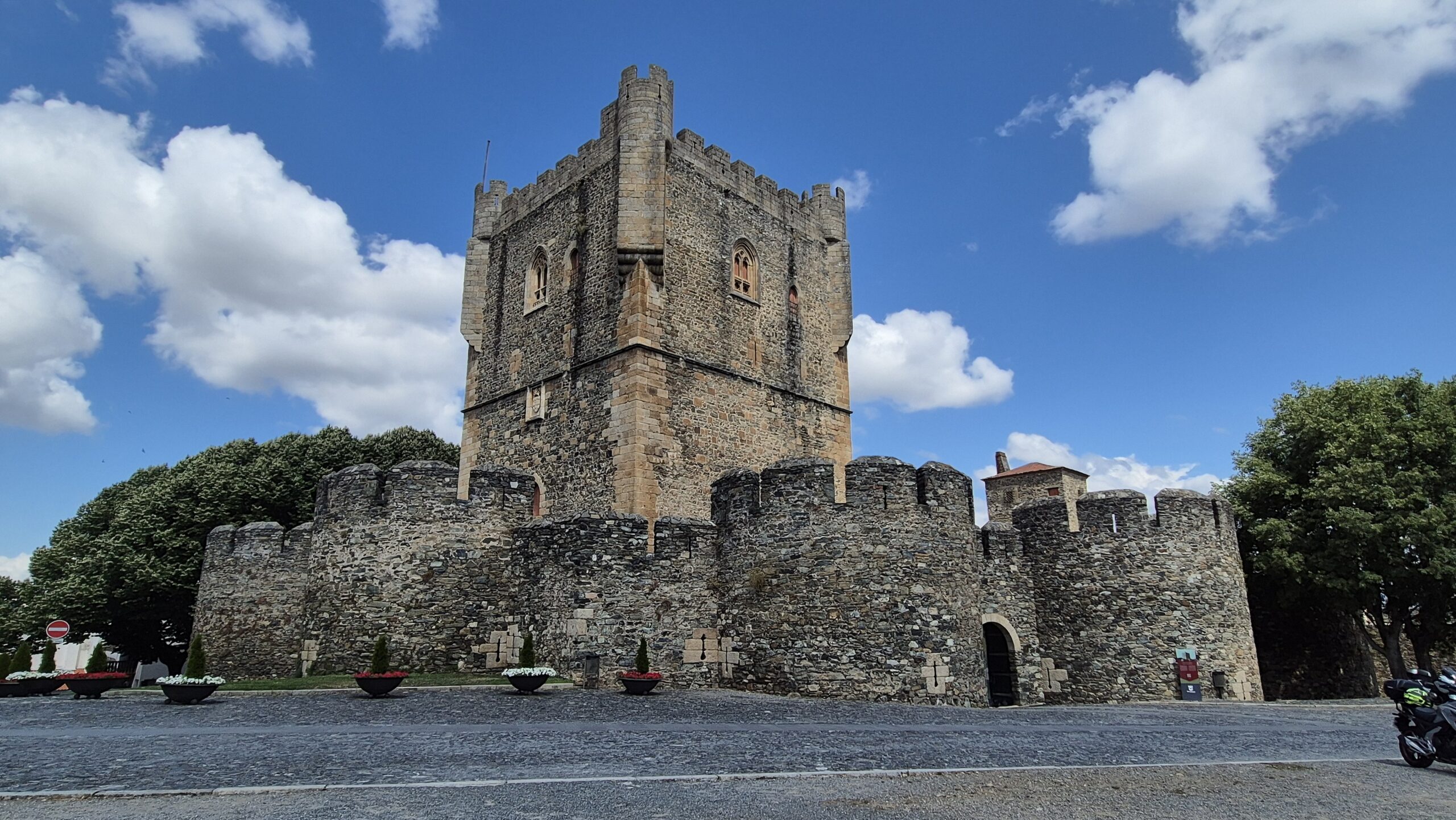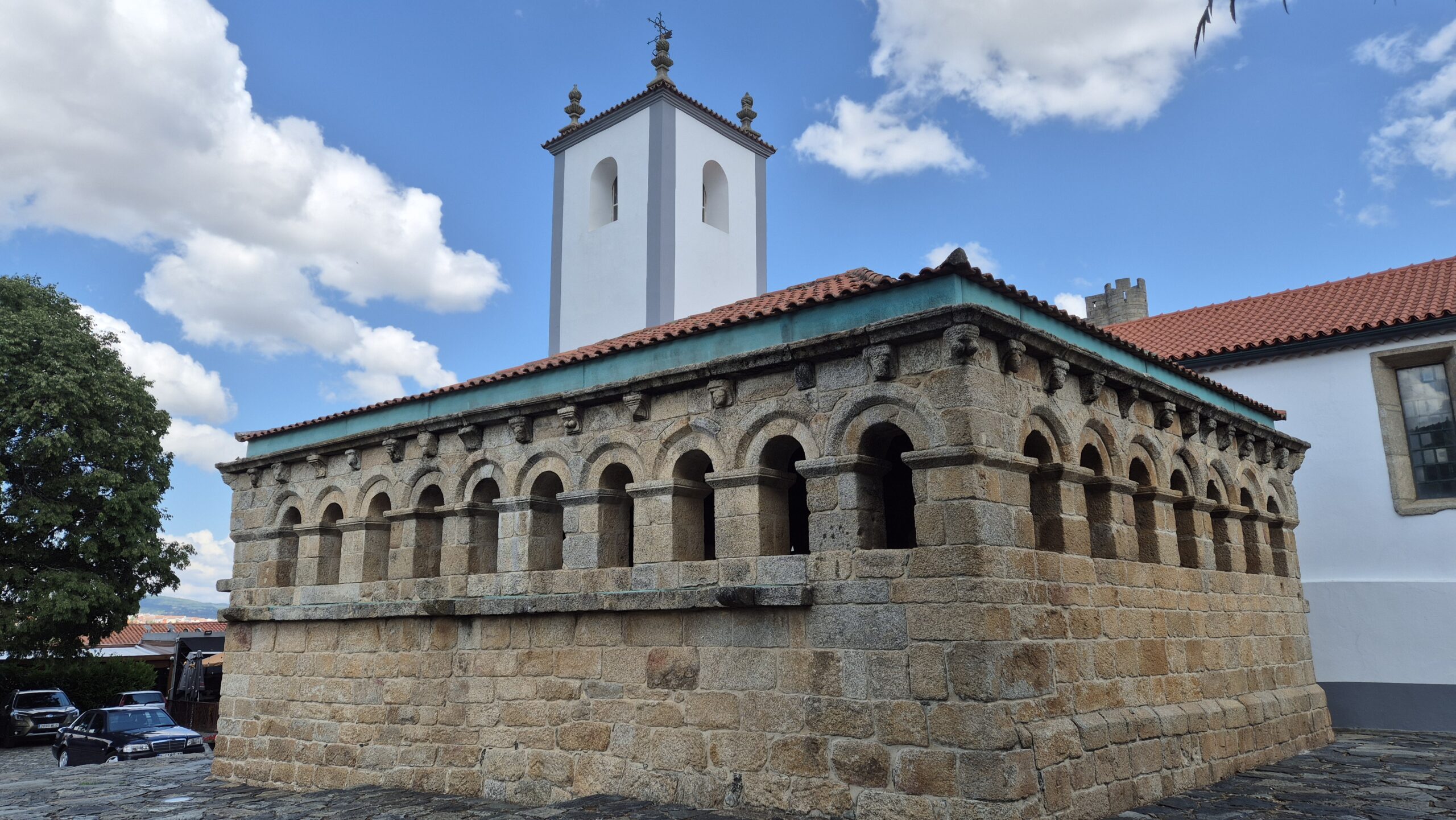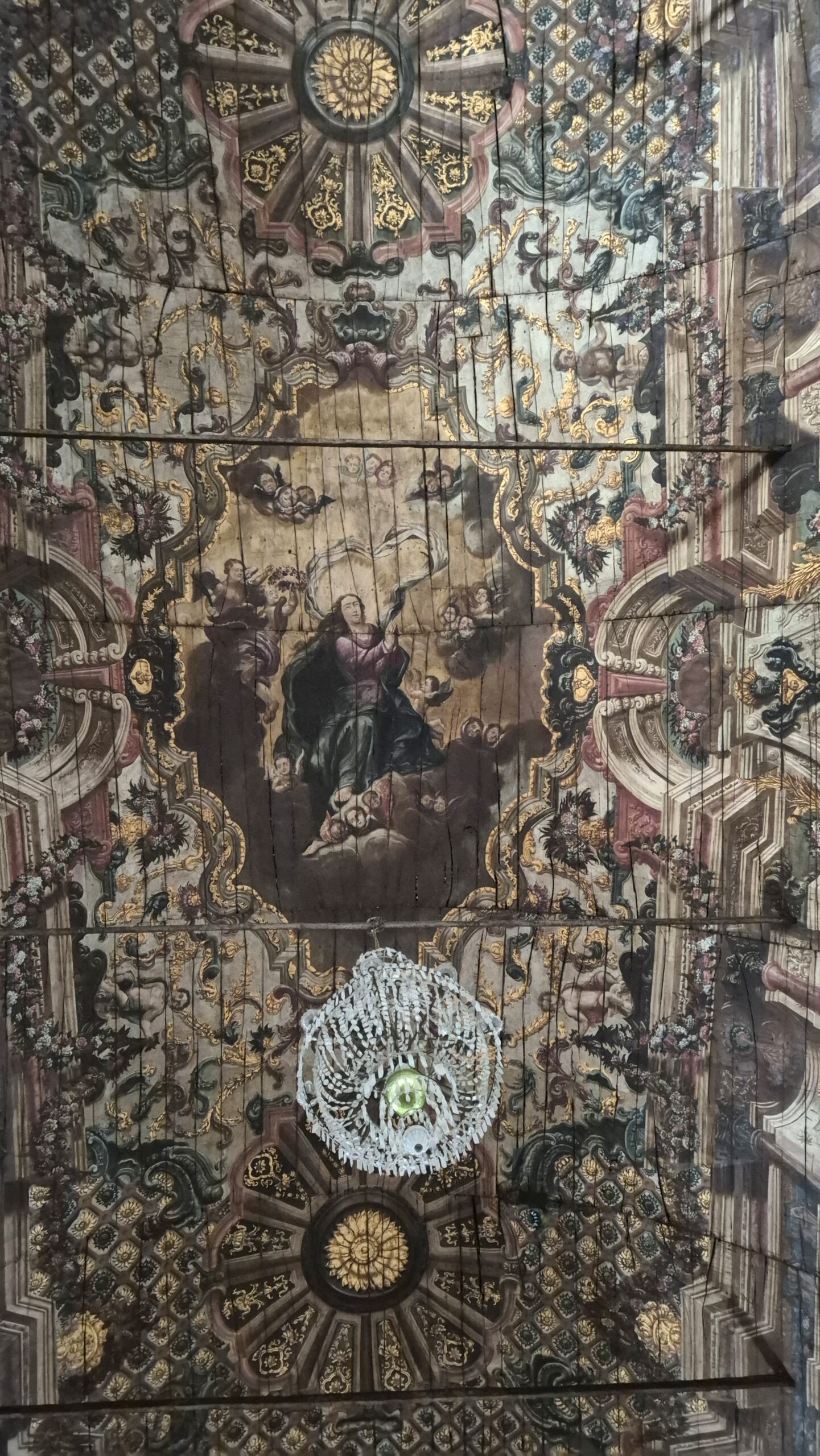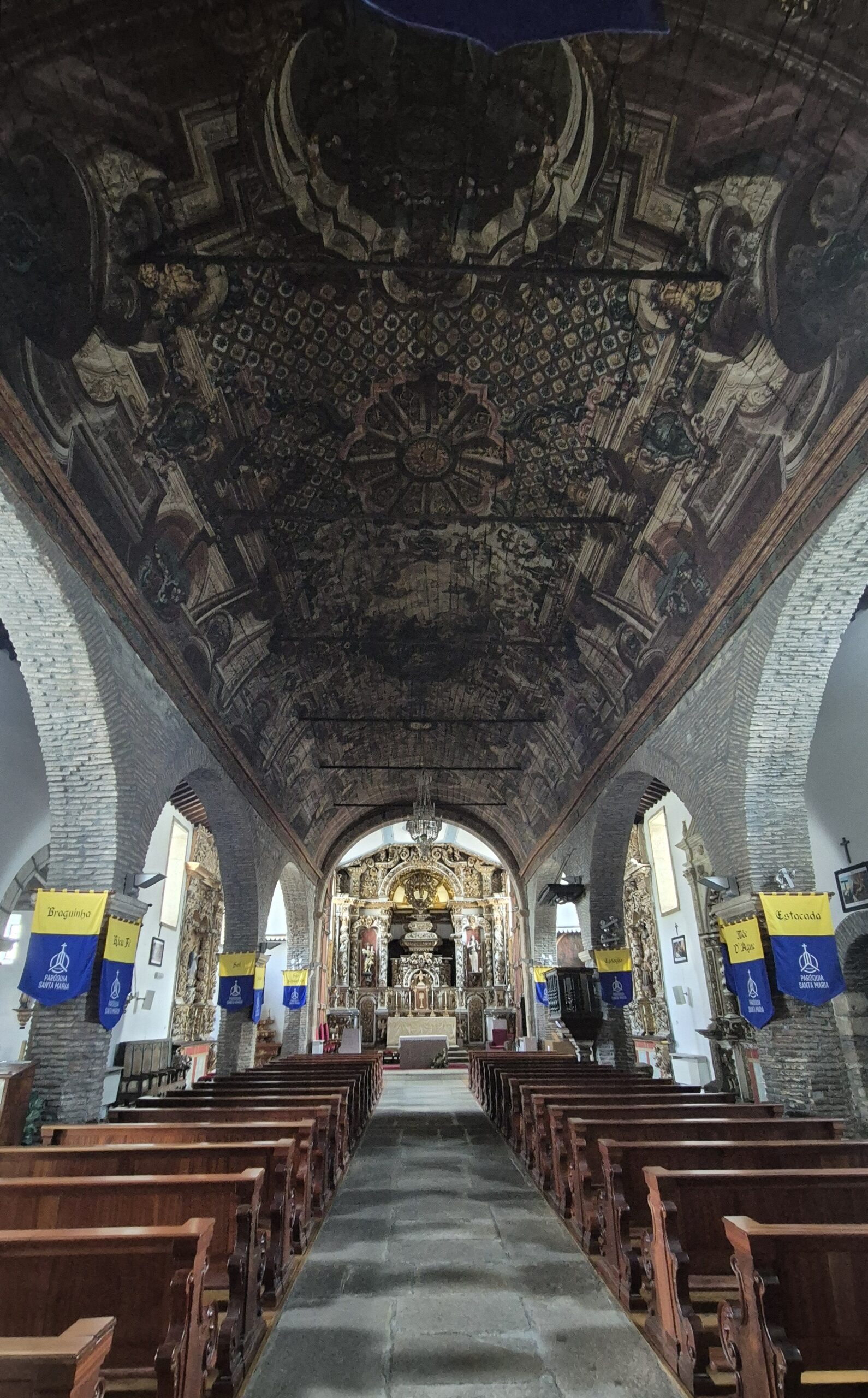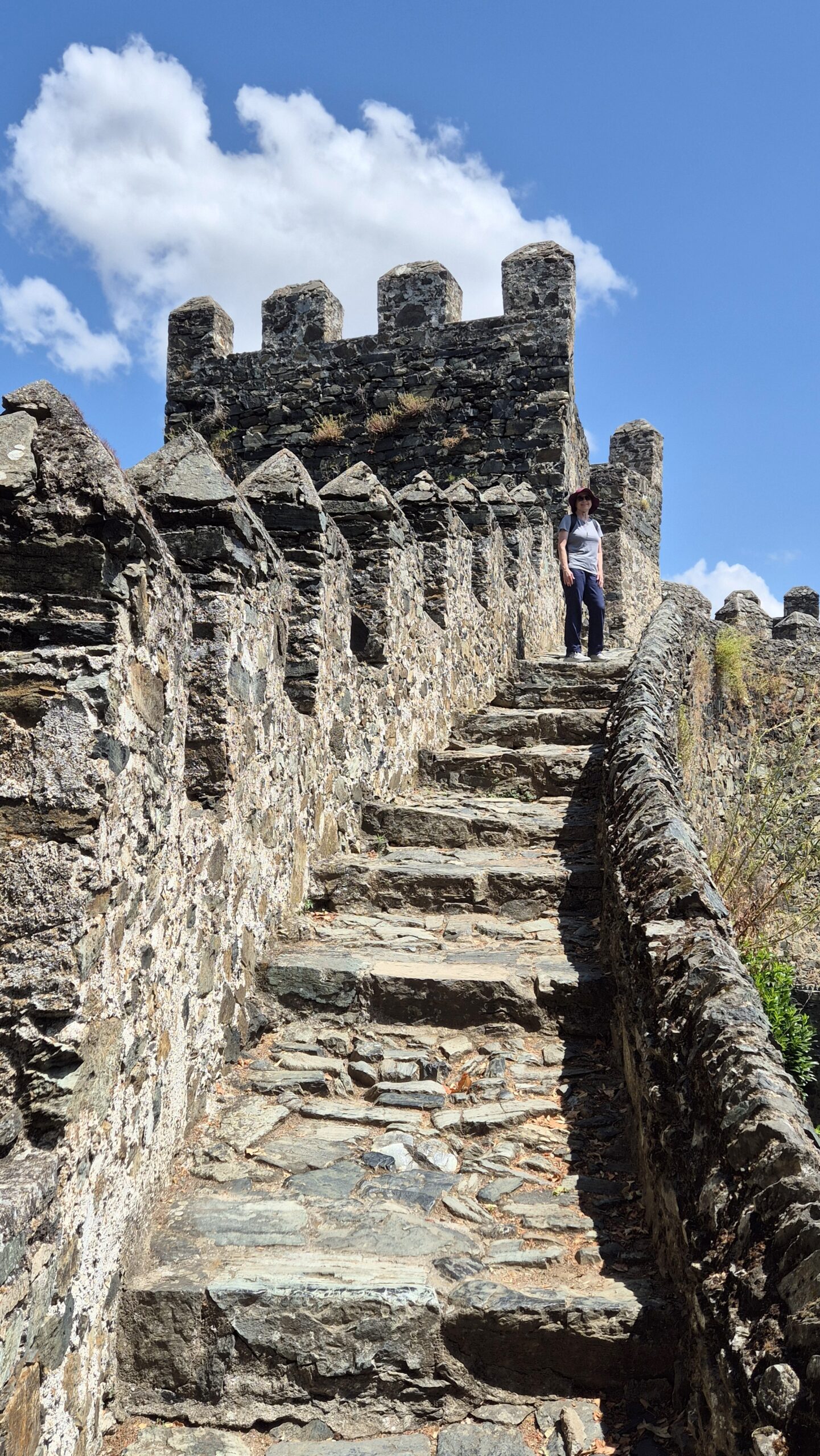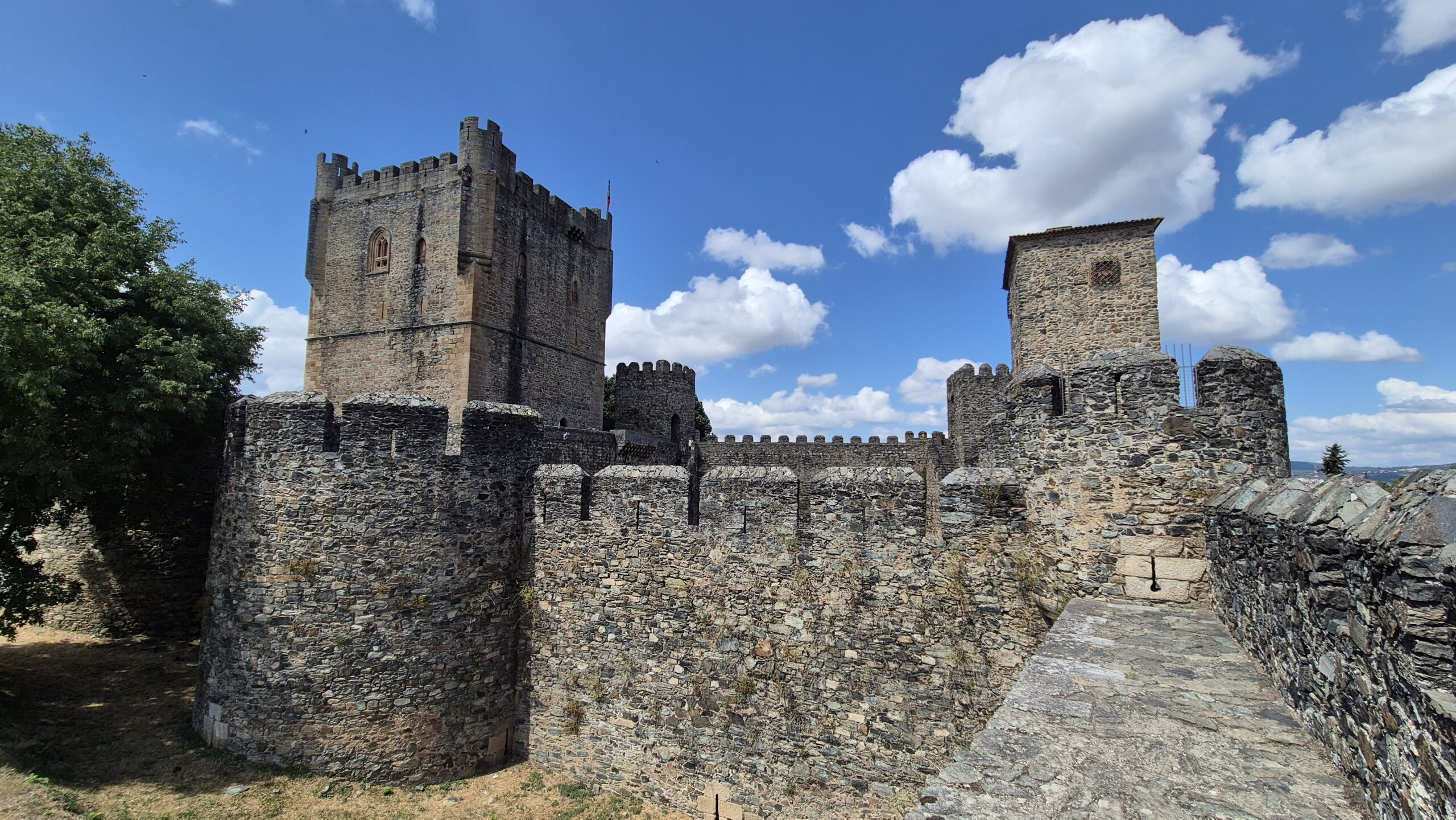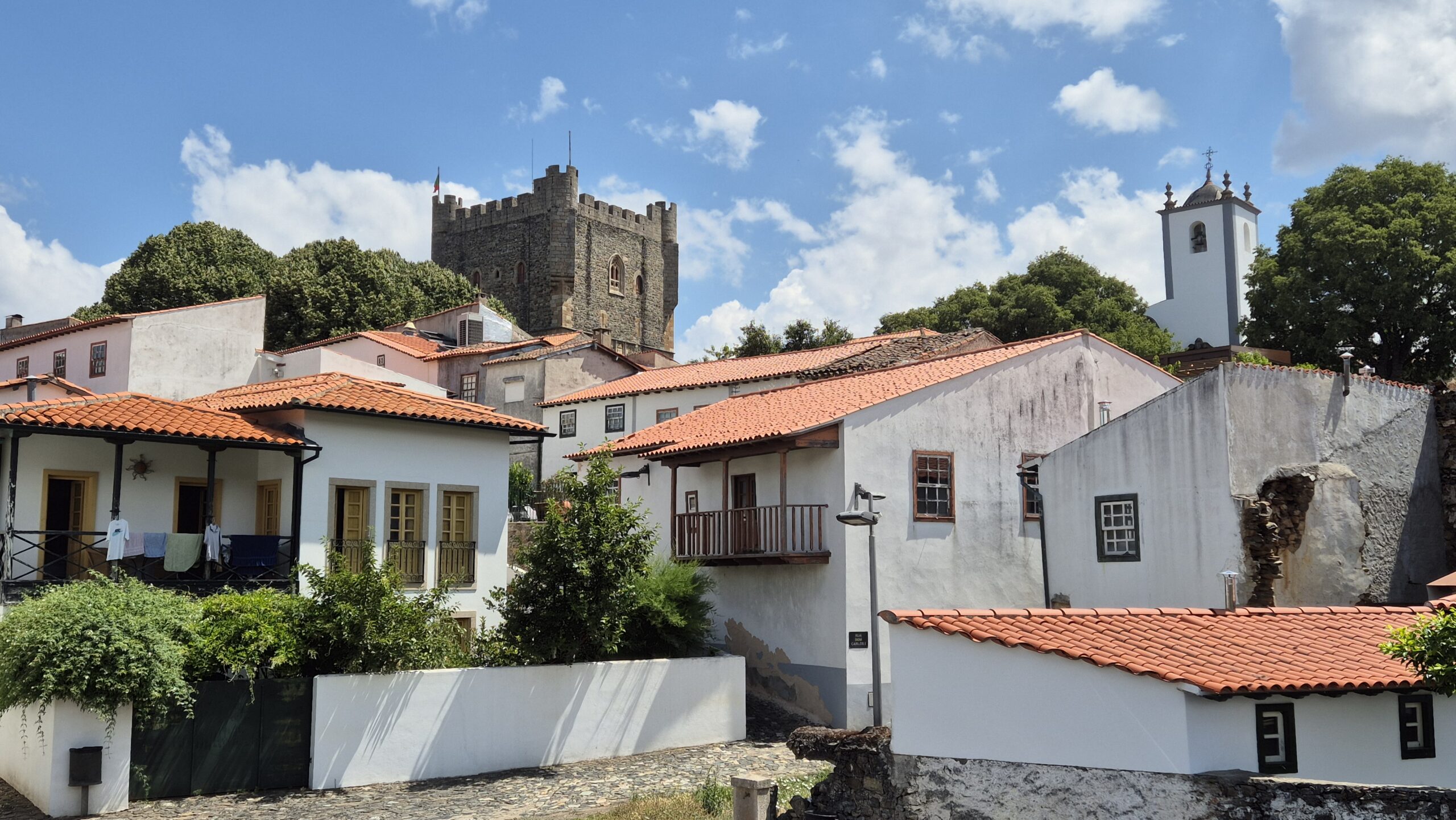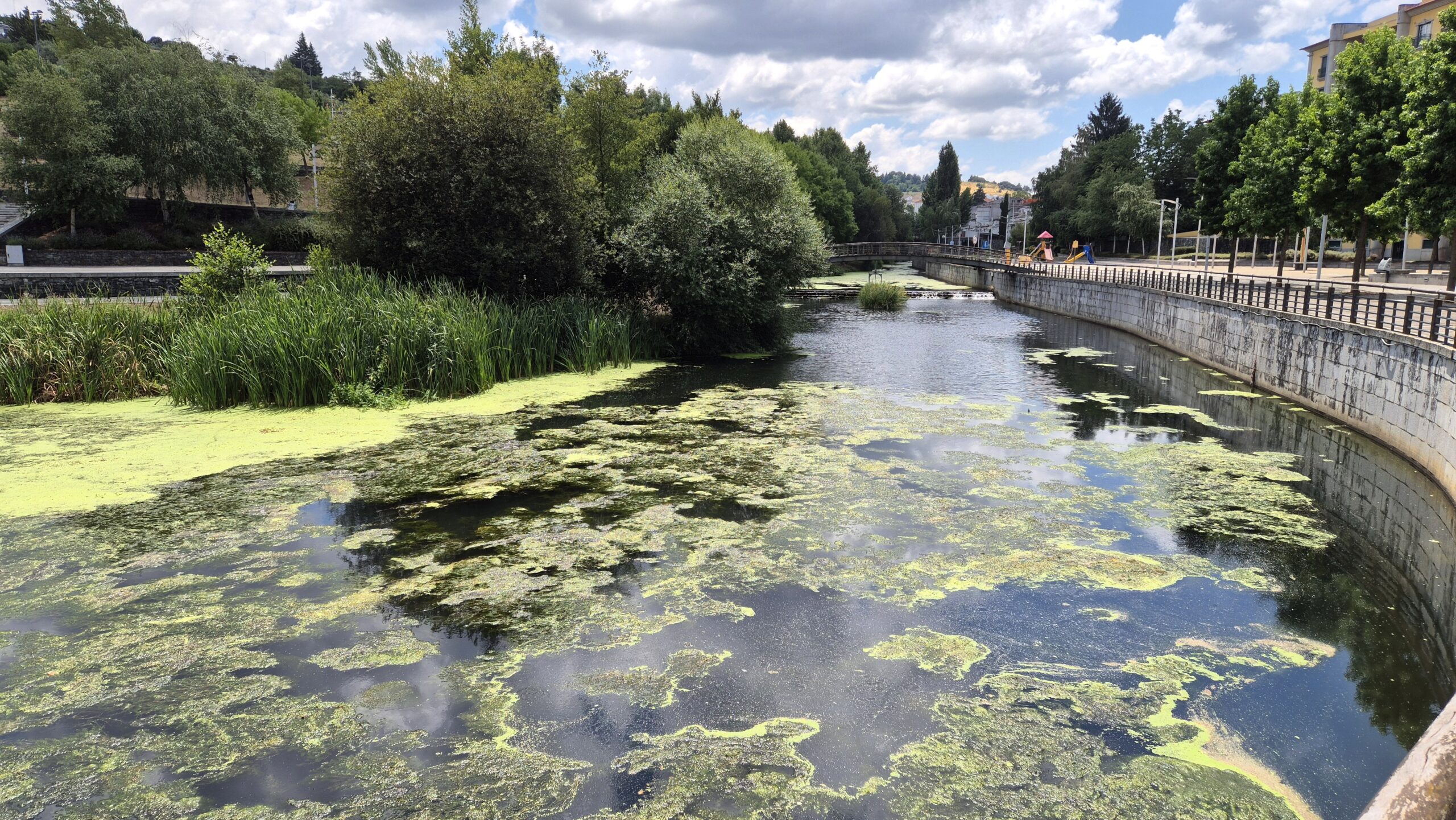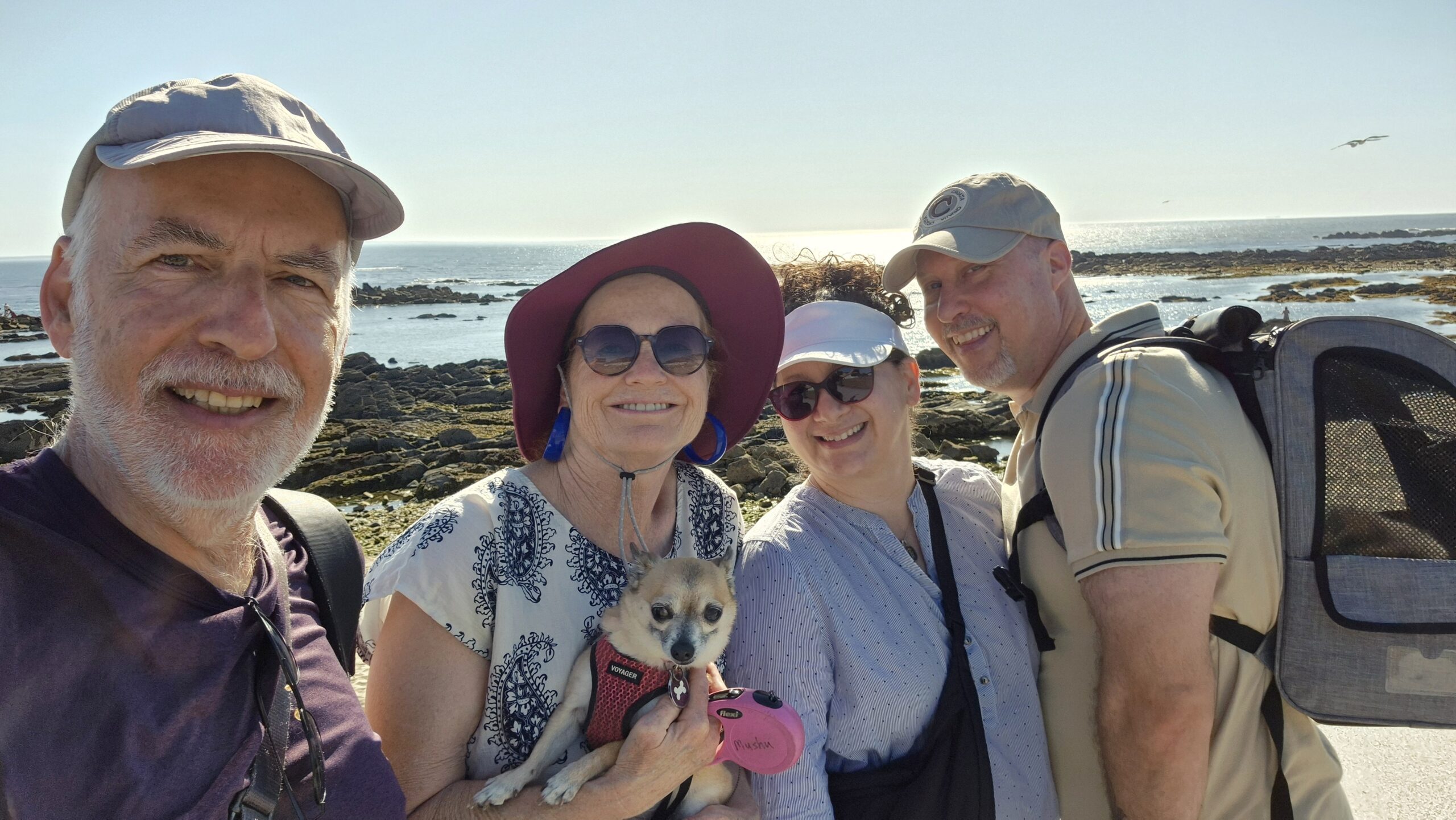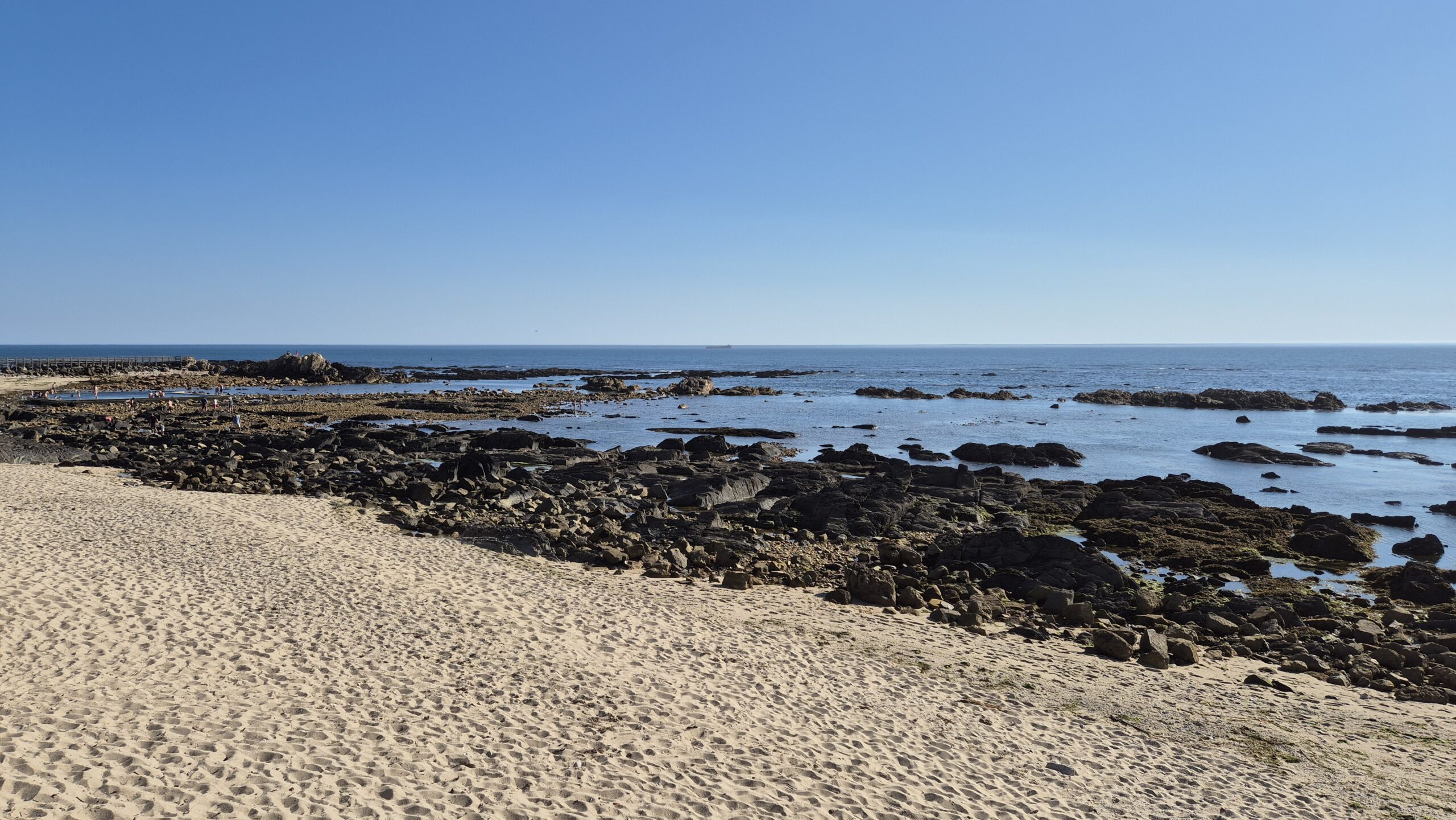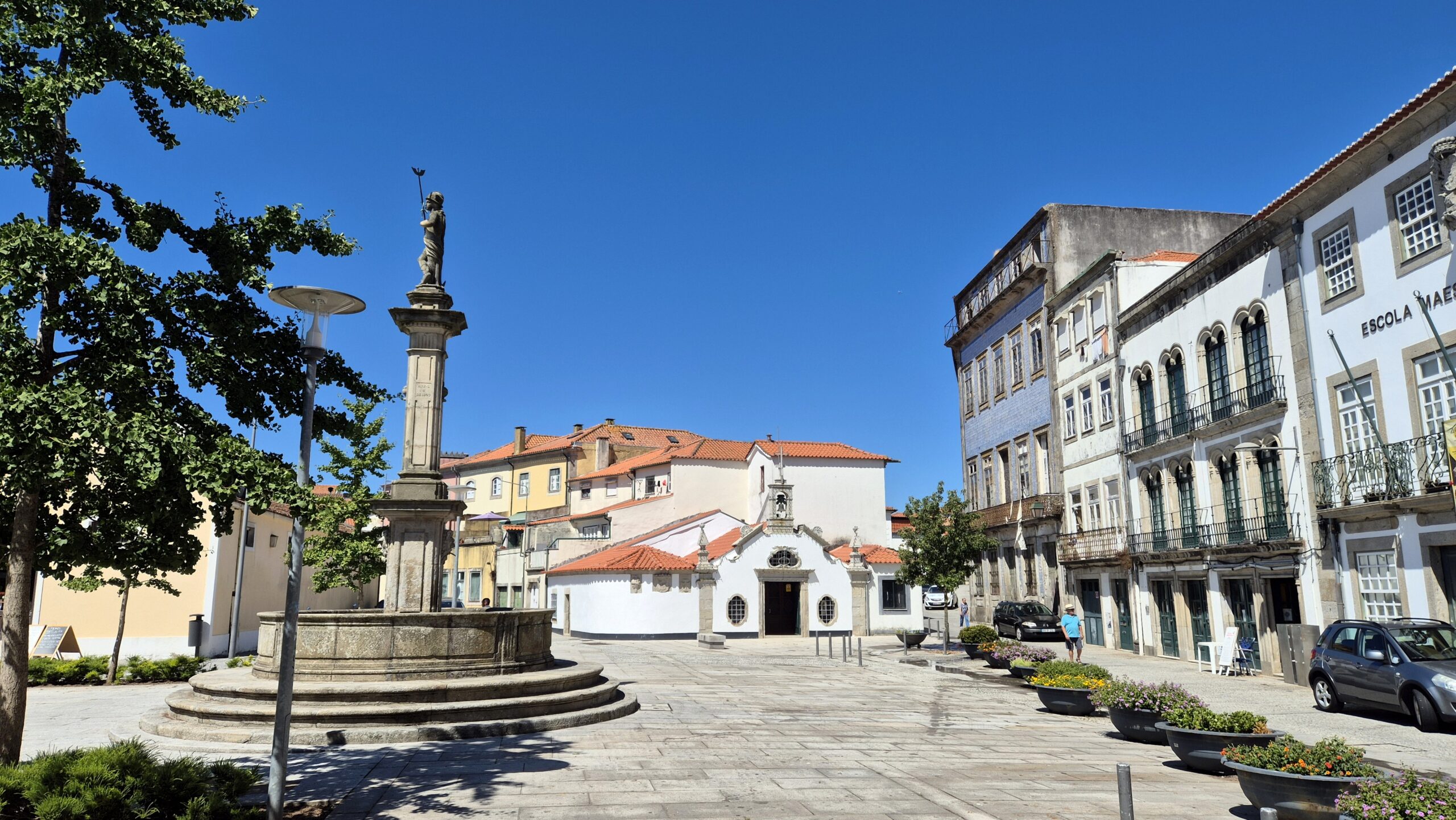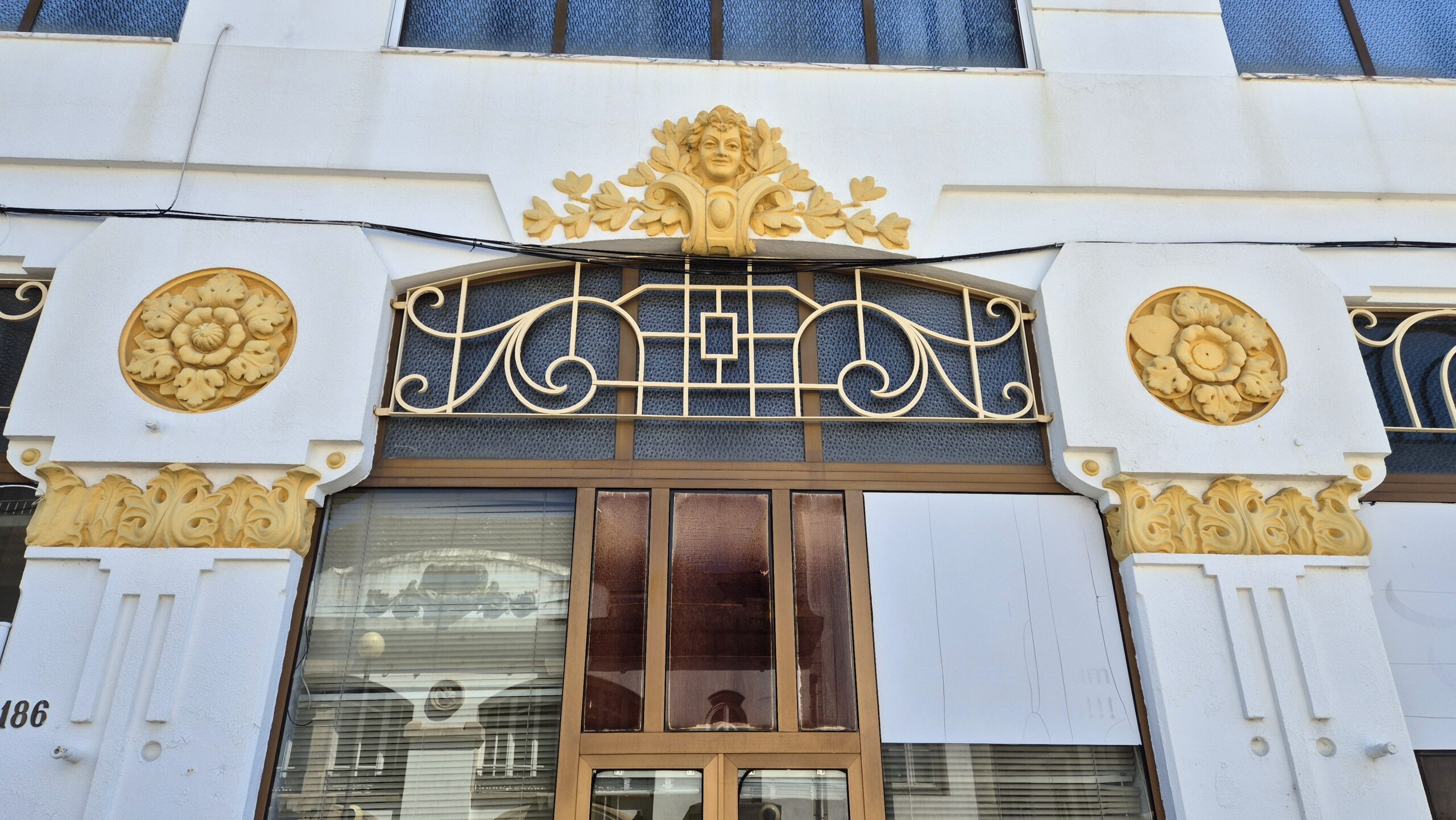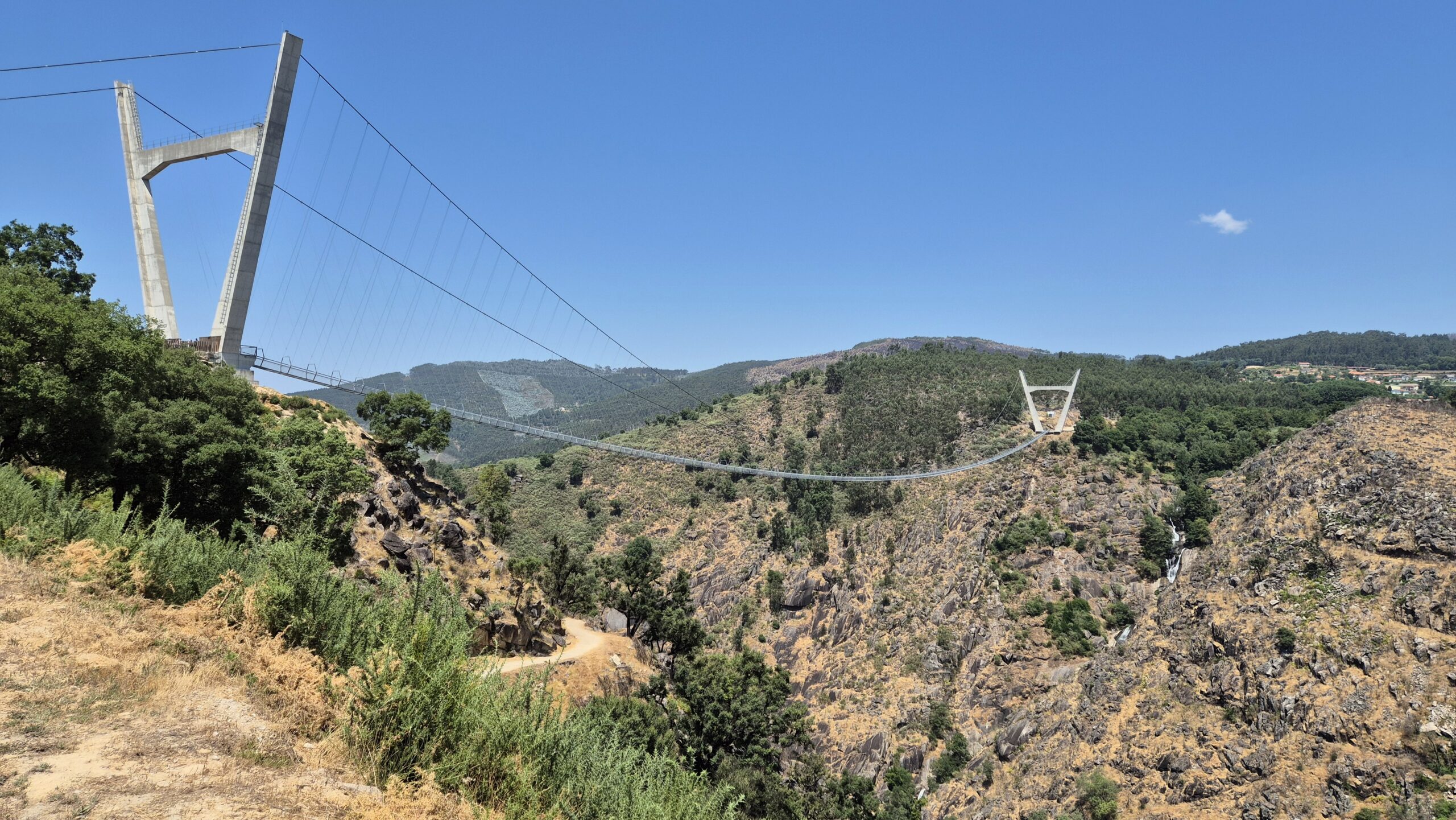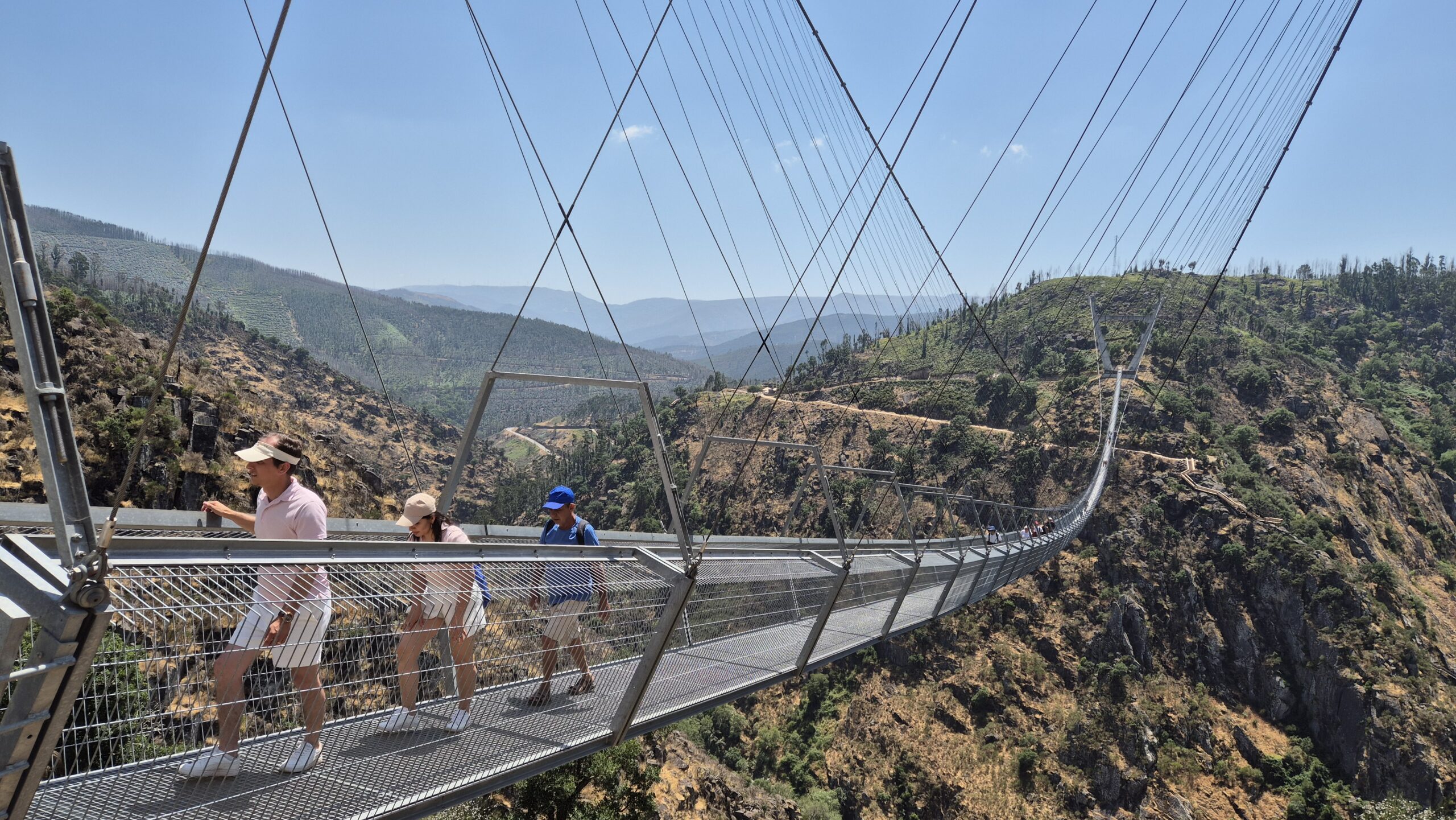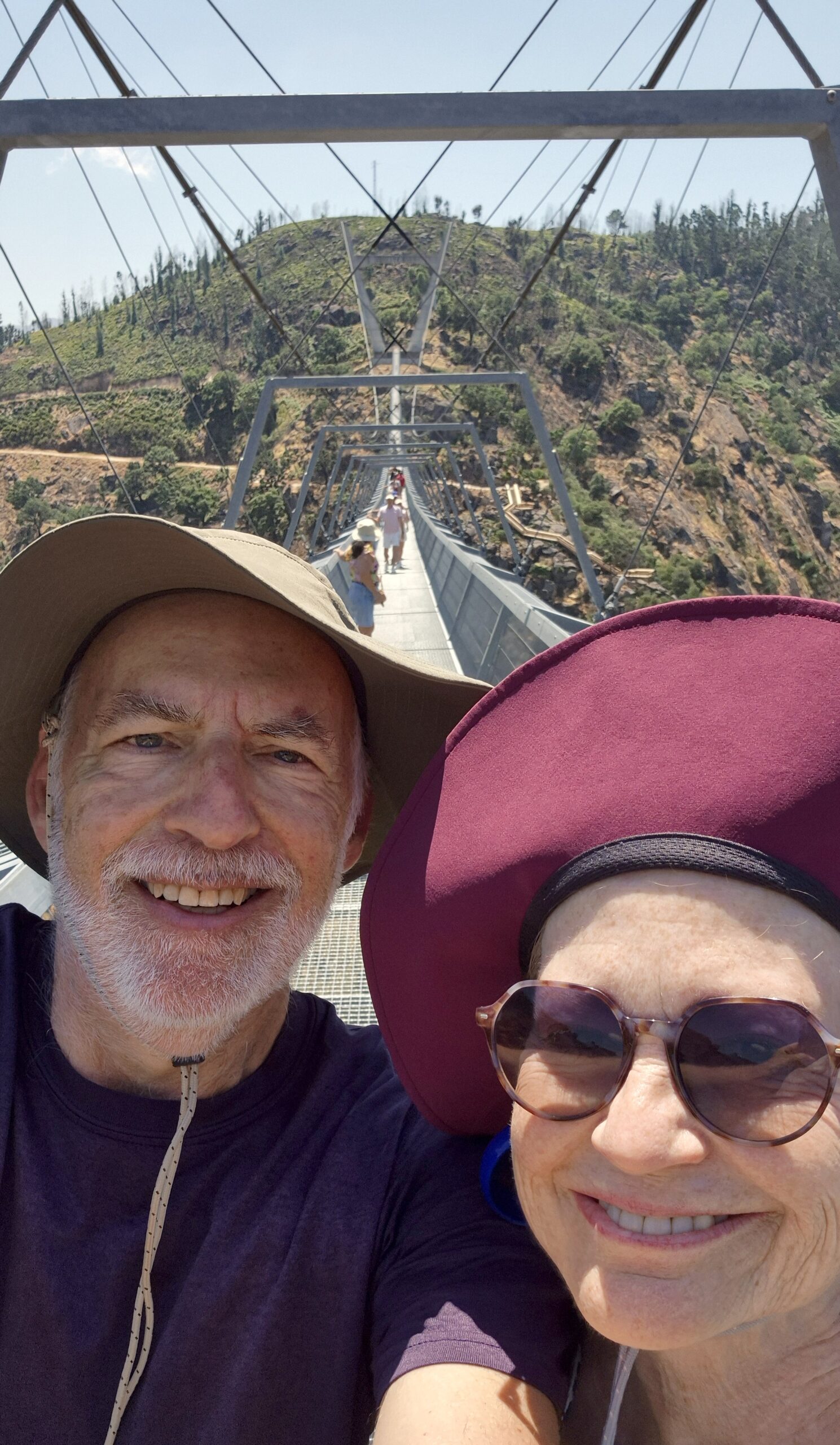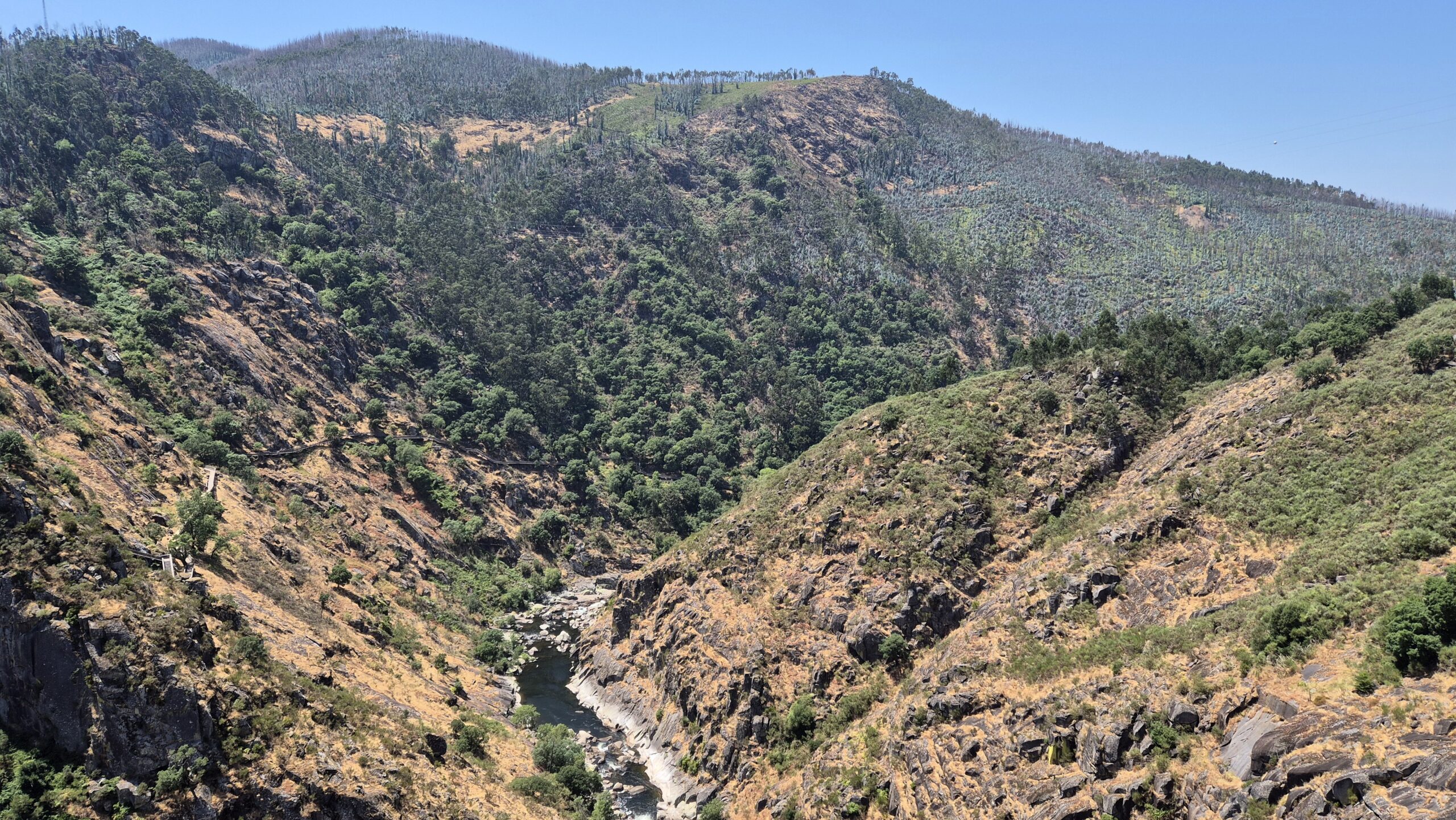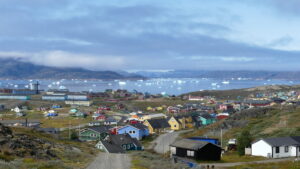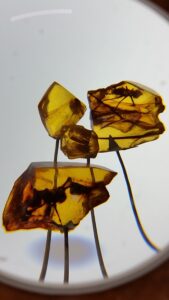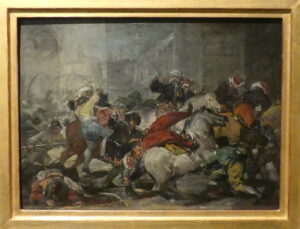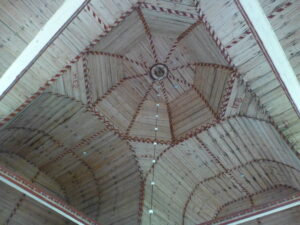In brief: While exploring the Douro River valley, we found other enticements in the vicinity – Bragança, Viana do Castelo, Arouca.
Our main goal was to do the Douro River valley and its towns, as you can see in our related post (click here).
But we were also enticed by other superlatives: the longest, the friendliest, and the most heraldic. So, we went a bit farther afield, to neighboring Viana do Castelo to visit old friends, to Bragança to see the home of Portuguese kings, and to Arouca for a dose of vertigo, swaying on the longest pedestrian bridge in the world.
Bragança, home of the Portuguese Kings
The town of Bragança, just a few kilometers from Spain, is a quiet one of about 30,000 people – except when Spanish tourists and motorcyclists descend on it for a weekend. Its cultural significance far outweighs its current importance: the 8th Duke of Braganza became King John IV in 1640 and restored the independence of Portugal from Spain. During his reign, Portugal became one of the great powers of the world. Moreover, for the next 270 years until the end of the monarchy in 1910, all the Portuguese kings – and the two emperors of Brazil – descended from the House of Braganza. We were staying just 90-minutes drive away, so we opted to visit this fount of history.
The castle keep at Braganca with its formidable walls. The legendary secondary tower to the back is called the Princess tower as legend has it some Princess was held captive here for love of a commoner.
The Romanesque exterior of this 15th century Domus Hall is quite unusual, as was its purpose. The building served two functions, a meeting hall for community decision-making above and a cistern below to collect rainwater. We couldn’t see how that all worked, as the building was closed for repairs.
Figures and filigree and floral design adorn this wooden ceiling inside the Santa Maria church, dating from the 11th century but much altered up to the 18th century.
The elegant interior of the Santa Maria church, with its arched nave, baroque altar, and painted wooden ceiling.
Visitors can follow the outer walls of the castle almost completely around.
Another view of the castle keep and the Princess tower at Bragança.
Inside the outer walls of the castle, with the castle keep and the Santa Maria church just visible in the background, newer buildings have displaced the old medieval housing.
Along the river through Bragança a charming walking path takes one across several small bridges, alongside a marshy area where we saw a family of moorhens, and under a kind of amphitheater space. Delightful urban planning.
Viana do Castelo
We’ve written about an earlier trip to this charming and lively town and environs (click here to read the post). This time, we so enjoyed our reunion with old friends in their new digs here. Whether we were roaming the historic streets, bar hopping into the night, ambling along the pleasant Atlantic coastline, or just talking for hours and hours – they showed us why this corner of Portugal could make such a fine home.
Suspended in Arouca
On the way toward Portugal’s Douro River, we dared to cross the longest pedestrian suspension bridge in the world. Yes, the world.
Its name, 516 Arouca, tells you how long it is: 516 m (or just under 1,700 feet). Arouca indicates roughly where it is. Roughly, as we discovered, because currently the bridge can only be reached by hiking 1.5 kilometers (about a mile) up some 500 stairs, quite a distance from Arouca town itself.
We lucked out on a very hot day. A work crew, trying to restore the nearby landscape after a ruinous fire last year, offered to give us a ride. Park here, they said, at a slim pull-out off the main road – and hop in. Then they drove us 10 minutes along a rough road – dropping us by the entry gate just at 2pm, our reserved time.
Soon we swayed on the bridge’s swooping metal walkway. The Paiva River flowed far underneath us, some 175 meters (or 574 feet) below.
Mind the gap
Making the crossing together
The Paiva River below. If you look carefully about halfway up the hillside, you can detect the wooden platforms that initiate a 7-kilometer trail along the river from the bridge to another town.
(To enlarge any picture above, click on it. Also, for more pictures from Portugal as of 2025, CLICK HERE to view the slideshow at the end of the itinerary page. To see a slideshow of photos between 2017 and 2024, CLICK HERE)


